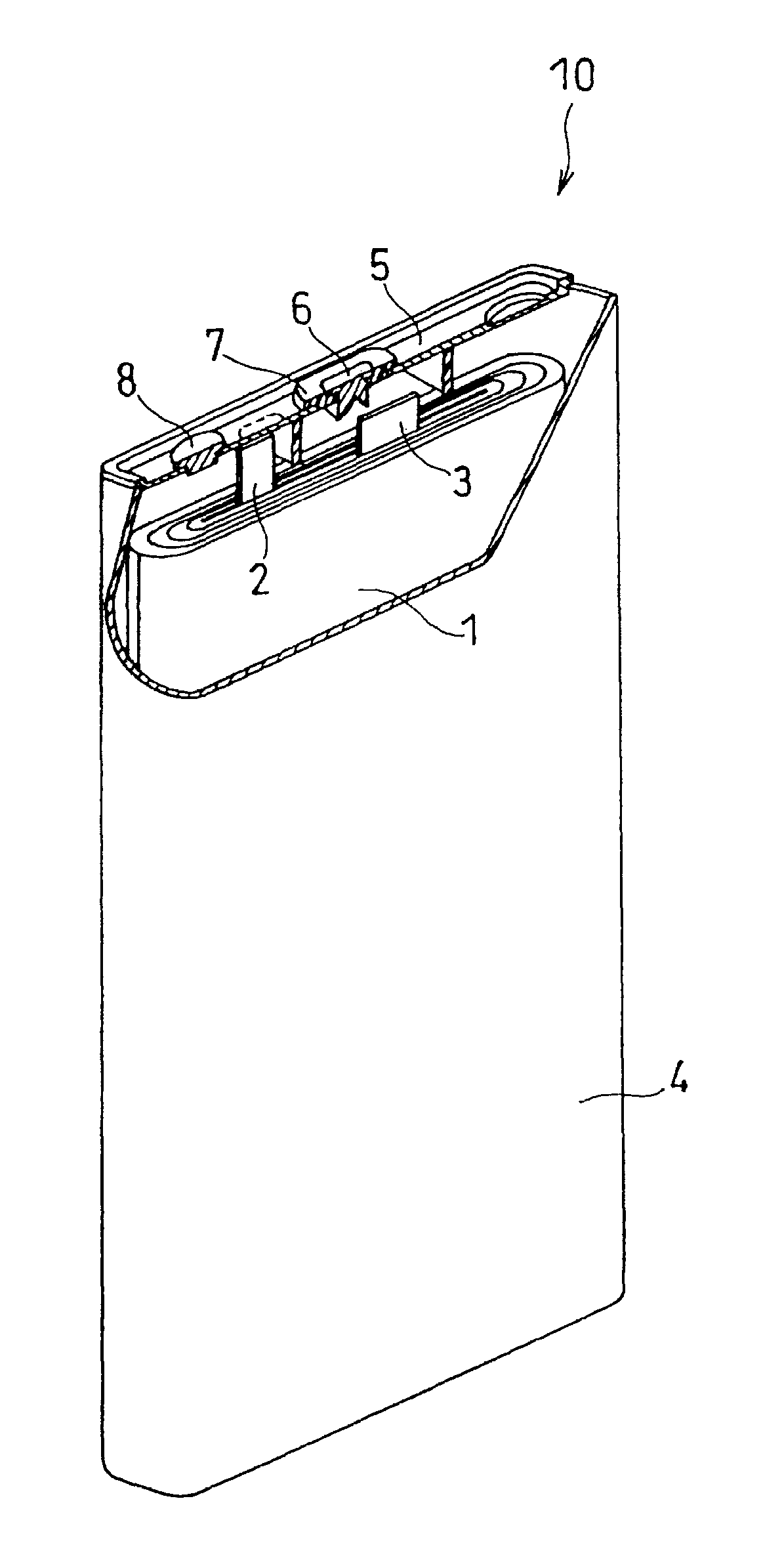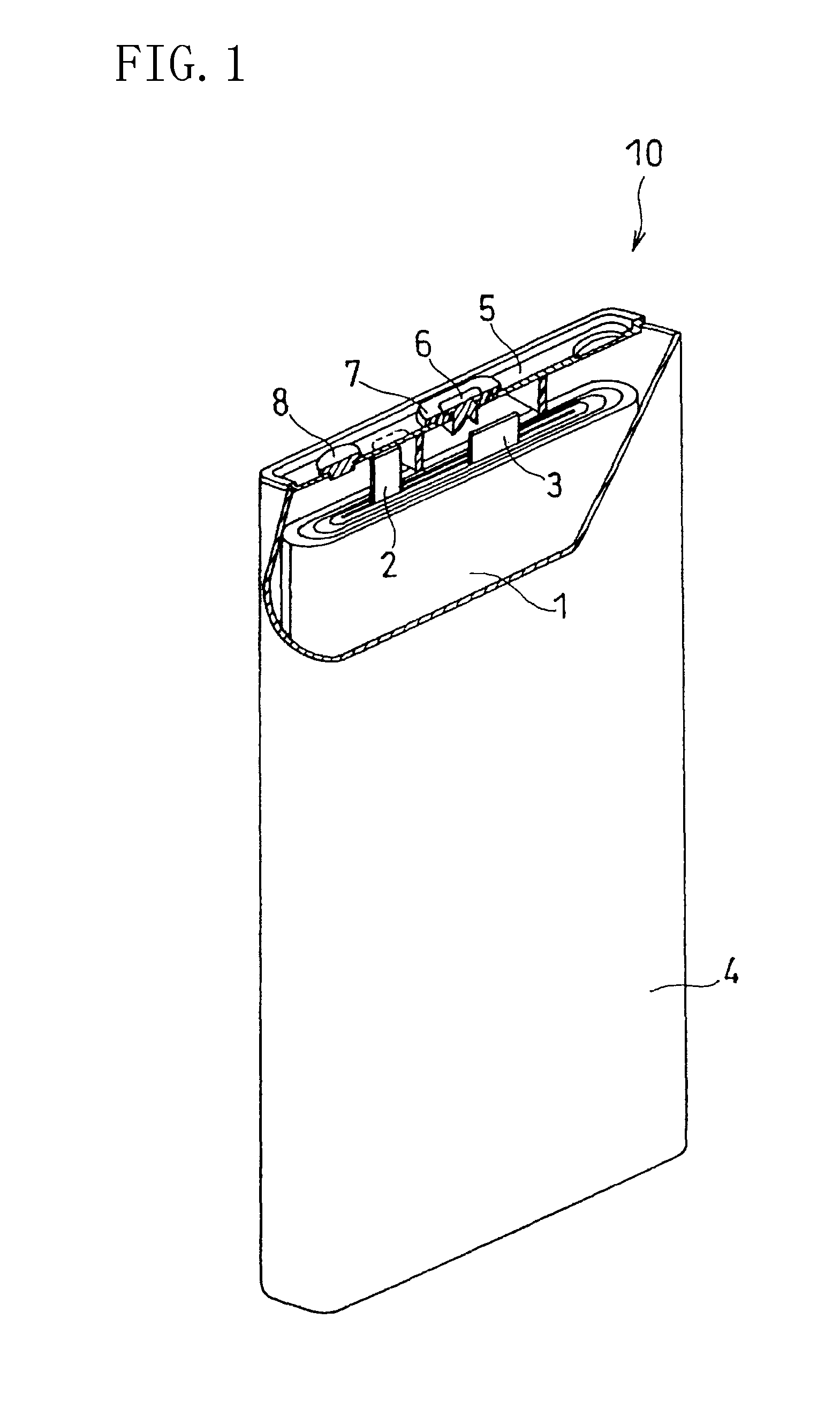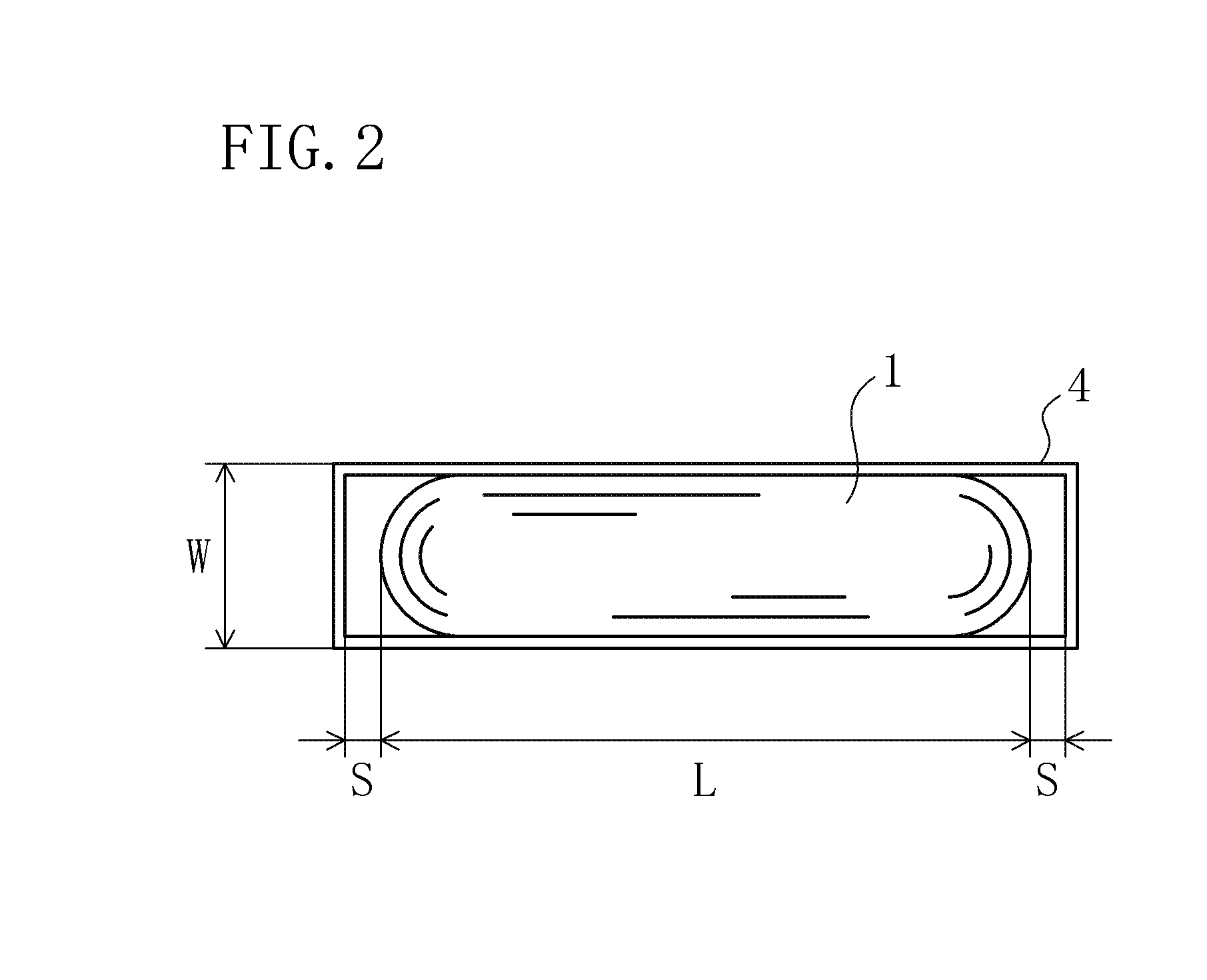Nonaqueous electrolyte secondary battery and method for fabricating the same
a secondary battery and non-aqueous electrolyte technology, applied in the direction of wound/folded electrode electrodes, sustainable manufacturing/processing, cell components, etc., can solve the problems of uneven electrode group, buckling in the electrode group, and so as to improve the charge/discharge cycle characteristic, alleviate the occurrence of buckling in the electrode group, and improve the effect of the charge/discharge cycl
- Summary
- Abstract
- Description
- Claims
- Application Information
AI Technical Summary
Benefits of technology
Problems solved by technology
Method used
Image
Examples
Embodiment Construction
The inventors of the present invention have studied a relationship between the positive electrode and the buckling in the electrode group due to expansion and contraction of the negative electrode active material, although conventional measures against the buckling have been taken particularly based on a relationship between the negative electrode and the buckling. As a result, the inventors have found that the buckling in the electrode group can be alleviated by setting a tensile strength of the positive electrode to 15 N / cm or lower when the positive electrode has the tensile extension of 1%. Based on the finding, the applicant of the present application has disclosed a method for alleviating the occurrence of the buckling in the electrode group by setting the tensile strength of the positive electrode to 15 N / cm or lower when the positive electrode has the tensile extension of 1% in the specification of Japanese Patent Application No. 2008-095232.
Table 1 shows a relationship desc...
PUM
| Property | Measurement | Unit |
|---|---|---|
| Fraction | aaaaa | aaaaa |
| Fraction | aaaaa | aaaaa |
| Percent by mass | aaaaa | aaaaa |
Abstract
Description
Claims
Application Information
 Login to View More
Login to View More - R&D
- Intellectual Property
- Life Sciences
- Materials
- Tech Scout
- Unparalleled Data Quality
- Higher Quality Content
- 60% Fewer Hallucinations
Browse by: Latest US Patents, China's latest patents, Technical Efficacy Thesaurus, Application Domain, Technology Topic, Popular Technical Reports.
© 2025 PatSnap. All rights reserved.Legal|Privacy policy|Modern Slavery Act Transparency Statement|Sitemap|About US| Contact US: help@patsnap.com



